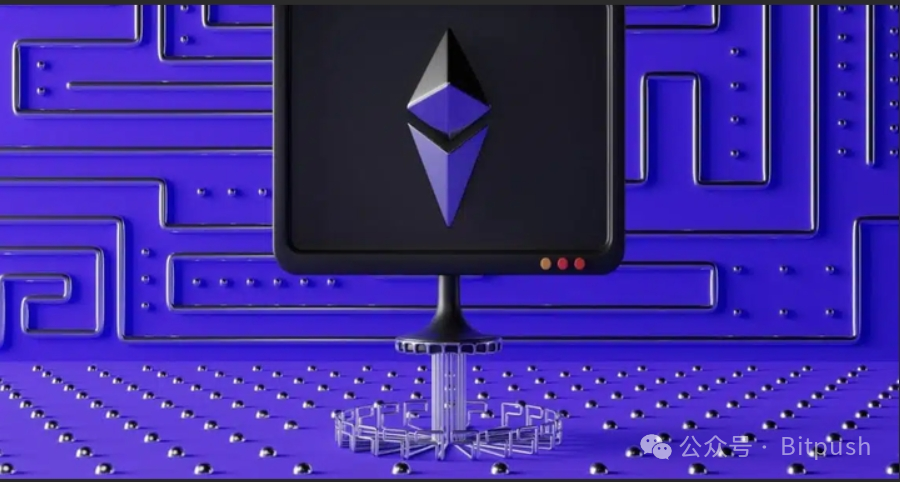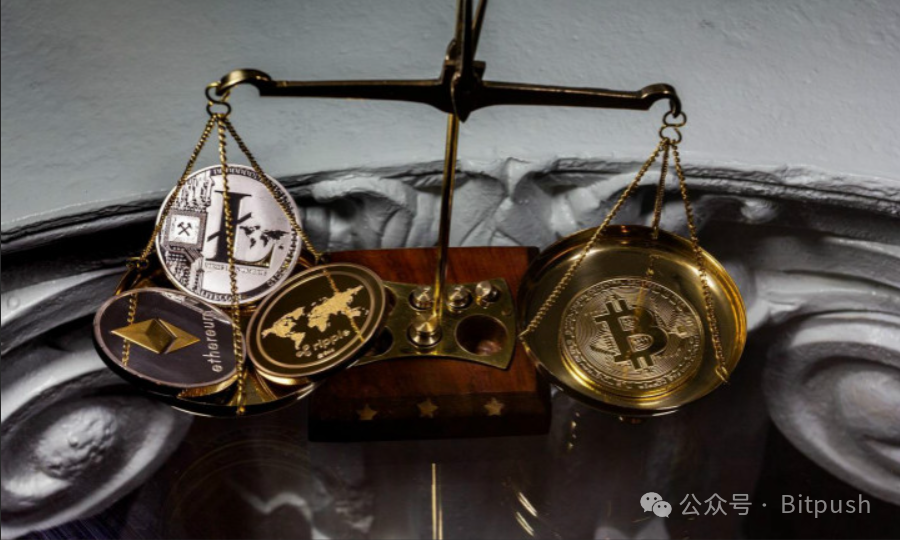Author: Asher Zhang
From the perspective of blockchain architecture, public chains can be divided into data layer, settlement layer, execution layer, and consensus layer. Ethereum plays an important role in the development of Layer2 ecosystem, providing important tasks such as settlement and security consensus. However, starting from 2024, modular blockchains built based on Cosmos have gained market popularity. For example, modular blockchains such as Celestia for data availability layer and Dymension for settlement layer have simplified the complexity of building L2 and applications, gradually encroaching on the interests of Ethereum.
On February 22, Vitalik Buterin, co-founder of Ethereum, replied to a user's tweet, stating, "To be honest, compared to five years ago, my confidence in the idea of simplifying L1, even at the cost of building a more complex L2, has decreased by three times. It is worth adding some complex functions to L1 to reduce the code burden of L2 and make L2 relatively simple." With the emergence of Restaking, Ethereum's counterattack has essentially begun. So, how does Restaking achieve secure sharing? What impact will it have on Ethereum?

How Restaking Achieves Secure Sharing
The concept of Restaking was first proposed by the founder of Eigenlayer, and the development of Restaking is the result of the continuous upgrading of the staking track. In September 2022, Ethereum transitioned from POW to POS, and Ethereum holders became network validators by staking ETH to ensure the secure operation of the Ethereum network. However, the biggest drawback of Ethereum staking is the high threshold (32 ETH) and the lock-up period. In response to these issues, derivative products of liquid staking (LSD) form pools with ETH staked by retail investors, and stakers receive ERC-20 derivative tokens (such as stETH issued by Lido) at a 1:1 ratio, which have strong liquidity and support trading and redemption. Simply put, Restaking involves staking assets that have already been staked again, driven by the potential to receive staking rewards and project airdrops.
What is the significance of Restaking proposed by Eigenlayer? In the real world, oracles, DeFi, and DALayer all require security. If the project does not have sufficient funds, it is difficult to establish its own validation nodes. In this context, Eigenlayer first proposed the concept of Restaking to meet this demand. When projects use the security provided by Restaking, the market expects them to receive airdrop rewards.
So, how does Eigenlayer achieve secure sharing through Restaking? Restaking provides four modes of restaking: native restaking (direct staking of ETH), LST re-staking, ETHLP re-staking, and LSTLP re-staking (Note: LST (Liquid Staking Token) refers to liquid staking tokens, such as stETH from Lido, CbETH from Coinbase, etc.). From the whitepaper, its implementation mechanism mainly relies on pooled security and open marketplace.
Pooled security mainly operates on the principle that Ethereum validators can set their beacon chain withdrawal certificates to EigenLayer smart contracts and choose to build new modules based on EigenLayer, which can impose additional reduction conditions on the ETH staked by validators who choose to join the module. In return, validators can receive rewards from the staked certificates and also earn additional income from projects using AVS (Active Validation Service).
Open marketplace governance: The open market mechanism of EigenLayer is mainly used to manage how validators provide their pooled security and how AVS uses their pooled security. Validators can choose whether to join or exit each module built on EigenLayer. Each module needs to incentivize validators to allocate re-staked ETH to it, and considering the possibility of additional reduction, validators will help determine which modules are worth allocating additional pooled security. In other words, the original intention of open market governance is to establish a competitive market decided by supply and demand, in simple terms, validators can freely choose which protocols to serve based on their own risk and return.
In addition, in terms of penalty mechanisms, Eigenlayer has significantly increased the cost of malicious attacks. The entire penalty is executed by smart contracts and can punish malicious stakers with up to 50% of their ETH.

Which Restaking Projects Are Worth Paying Attention to
According to Dune data, as of February 27, the TVL value on EigenLayer has reached as high as $9.447 billion, with 2.8134 million ETH staked and the restaking token (LRT) continuously rising. So, besides EigenLayer, which projects are worth paying attention to?
KelpDAO is a multi-chain liquidity staking platform. Its founder previously founded the liquidity staking protocol StaderLabs, which is the second largest LSD protocol on Polygon and BNBChain. KelpDAO is currently building an LRT solution on EigenLayer, and its restaking token is rsETH.
ether.fi is a liquidity staking platform that launched its restaking token eETH on November 15, 2023, allowing users to stake their ETH to receive staking rewards and automatically restake their ETH in EigenLayer without the need for manual restaking. eETH can be used in DeFi protocols such as Pendle, Curve, Balancer, Maverick, Gravita, TermFinance, and Smmelier.
Stakestone is a one-stop full-chain LST staking protocol, comparable to Lido, which can bring native staking rewards and liquidity to Layer2, not only supporting top staking pools, but also compatible with restaking, and will integrate EigenLayer. StakeStone also actively participated in Manta's incentive activities, providing $720 million in liquidity in Manta's NewParadigm with a TVL of $9 billion.
Entangle is a cross-chain DeFi protocol, with products including LiquidVaults, oracles, and the Photon communication protocol. Entangle is attempting to enter the restaking track, where users can deposit their LP tokens or staking tokens into LiquidVaults to receive 1:1 supported LSD, which can be used for restaking or exchange. In January 2024, Entangle completed a $4 million seed and private funding round, with institutions such as BigBrainHoldings and LaunchCodeCapital participating.
Karak is a modular Layer2 with native risk management, restaking, and AI infrastructure. Currently, users can earn XP rewards on Subsea. On December 13, 2023, Karak developer AndalusiaLabs completed a $48 million Series A funding round, led by LightspeedVenturePartners, with a valuation of over $1 billion.
OmniNetwork is a restaking blockchain that allows developers to access their applications across all Rollups. Omni validators need to restake their ETH to participate in network consensus across all Rollups. Omni has introduced a unified global state layer to ensure security through restaking in EigenLayer, which can be used for cross-chain communication and lending between different Rollups. In April 2023, OmniNetwork completed a $18 million financing round, with participation from PanteraCapital, TwoSigmaVentures, JumpCrypto, Hashed, and TheSpartanGroup.
AltLayer is a Rollup-as-a-Service protocol. In December 2023, EigenLayer partnered with AltLayer to launch RestakedRollups. AltLayer aims to offer RestakedRollups as a single bundle so that Rollup users can benefit from integrated features such as decentralized ordering, fast determinism, and composability in a single Rollup. AltLayer is also one of the first eight partners to achieve data availability using EigenDA.
SSVNetwork is a decentralized open-source ETH staking network based on Distributed Validator Technology (DVT). A tweet on January 4th indicated that SSV will collaborate with EigenLayer to complement restaking. It claims that a "mainnet" EigenLayer validator is running on SSV. At the same time, both EigenLayer and stakers can choose to transfer the responsibilities of validators to SSV and maintain the restaking status of ETH on EigenLayer to receive additional rewards from the SSV incentive mainnet.

How Restaking Will Impact Ethereum
In 2023, Bitcoin's inscription was hot, followed by the rise of Depin and Meme on Solana. Although Ethereum has the narrative of Layer2, it has been lukewarm. Especially, modular blockchains on Cosmos have further challenged the interests of Ethereum. In fact, it wasn't until the emergence of restaking that Ethereum's narrative was once again recognized by the market, which can also be reflected in its price trend. So, how do crypto influencers view the development of restaking?
ZhuSu posted on platform X, stating that he does not currently believe that Eigenlayer restaking will pose a significant risk. However, if users borrow ETH and then restake it, and continue to operate on Eigenlayer, the situation will be different because it may lead to ETH liquidity pull, rising interest rates, and the possibility of negative interest rate arbitrage liquidation.
Crypto influencer @lanhubiji: Binance has invested in renzo and puffer in the restaking track. In addition, there are kelpdao, swell, etherfi… It's getting more crowded. Eigenlayer, as a part of Ethereum's security, has taken on many responsibilities in this cycle, especially as the modular era begins.
Crypto influencer @yushuobtc: Recently, A16z and Binance have been investing in liquidity restaking protocols. As the two largest investment institutions in the crypto industry, they were also the leading institutions in the last round. There will definitely be a great opportunity in the restaking sector later on. Binance's new coin #ALT, currently at $0.565, is a good investment target and can be entered in batches.

Conclusion
In the ever-changing narrative of the crypto world, restaking is undoubtedly the most important narrative for Ethereum in this cycle. Eigenlayer has to some extent improved the efficiency of asset operation on Ethereum and also extended the security consensus on the Ethereum main chain. With the explosive growth of the application ecosystem, Eigenlayer also has a broad development prospect. However, from a risk perspective, the Eigenlayer project is still in the early stages of development and carries its own risks. Overall, with the development of modularity, Eigenlayer's model is imaginative and helps projects deploy applications quickly, conveniently, and cost-effectively.
免责声明:本文章仅代表作者个人观点,不代表本平台的立场和观点。本文章仅供信息分享,不构成对任何人的任何投资建议。用户与作者之间的任何争议,与本平台无关。如网页中刊载的文章或图片涉及侵权,请提供相关的权利证明和身份证明发送邮件到support@aicoin.com,本平台相关工作人员将会进行核查。




